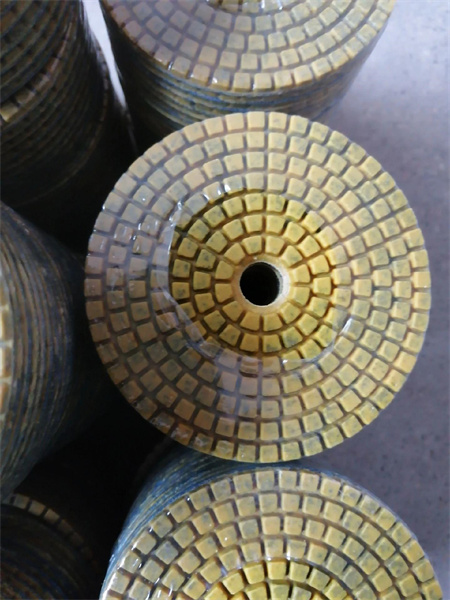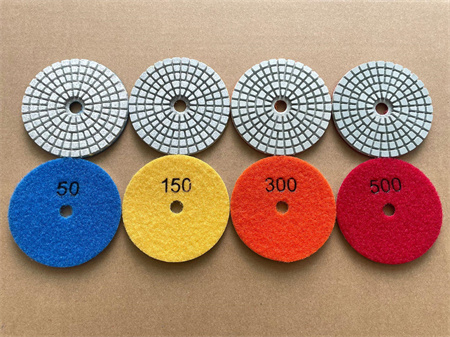Recycling Options for Polishing Pad Packaging
The beauty of modern products lies not only in their functionality but also in the way we manage their environmental impact. One area where sustainable practices are gaining traction is in the packaging of items like polishing pads. These essential tools, used for everything from automotive care to floor cleaning, often come wrapped in materials that end up in landfills. However, as awareness about environmental responsibility grows, so too do the options available for recycling and reusing these materials. If you’re someone who uses polishing pads regularly, it’s worth exploring the various recycling avenues that can help minimize your ecological footprint.

Before diving into recycling options, it’s essential to understand what kinds of materials are typically used to package polishing pads. Most polishing pads come in plastic blister packs or plastic bags, which are lightweight and protective but often not recyclable through standard curbside services. In some cases, these packs may even contain a mix of plastic and paper, further complicating the recycling process. The key to making better choices in disposal and recycling is being mindful of these materials and seeking alternatives when possible.
Plastic Packaging: A Major Contributor to Waste
Plastic packaging has long been a culprit in the growing pollution crisis. However, not all plastics are created equal. Many polishing pad manufacturers are beginning to use recyclable plastic, but it’s important to look for labels indicating this. Polyethylene (PE) and polypropylene (PP) are two of the most common recyclable plastics used in packaging. These materials are generally accepted by recycling centers, but you’ll need to ensure they are clean and free from residual product before recycling them.
Recycling plastic used for polishing pad packaging is straightforward but requires a little extra care. Simply separating the plastic from other waste and making sure it is clean can significantly increase the chances of it being properly recycled. In some areas, local recycling programs may even offer special bins for plastic packaging. It’s always a good idea to check with your local waste management facility for specifics.
Cardboard and Paper Alternatives
Another packaging option for polishing pads is cardboard or paper-based materials. Unlike plastic, these materials tend to be more readily accepted by most recycling programs. Cardboard boxes, for example, are widely recyclable and are often used as a more sustainable alternative to plastic blister packs. The major benefit here is that the packaging can be broken down and reused in a wide variety of industries, ranging from construction to new product packaging.
Even if the paper packaging has small plastic windows or is coated with a layer of plastic for moisture protection, many recycling programs can still process these materials. The key is to separate the plastic elements (like windows or tape) from the paper before recycling. For those committed to sustainability, seeking out companies that use 100% recyclable paper or cardboard packaging is one step closer to reducing waste.
Biodegradable and Compostable Options
While less common, some companies are beginning to experiment with biodegradable or compostable packaging for polishing pads. These materials, often made from plant-based fibers or bioplastics, break down more easily in landfills compared to traditional plastics. The use of such packaging materials is still in its early stages, but it holds great potential for the future of sustainable product packaging.
To compost or recycle these materials, it’s important to check for certification logos like the “Compostable” or “Biodegradable” label, which indicates that the material will break down under composting conditions. While these options may not yet be as widespread, their rise is an encouraging sign that businesses are listening to consumer demand for greener alternatives.
Innovative Programs and Take-Back Initiatives
Some brands are taking recycling a step further by introducing take-back programs. These initiatives encourage customers to return used packaging for recycling, ensuring that it doesn’t end up in a landfill. While not universally available, these programs are worth looking into, especially if you’re a frequent user of a particular brand of polishing pads.
In these programs, manufacturers partner with recycling companies or use specialized facilities to collect, sort, and repurpose materials from used packaging. Some brands may even offer incentives, such as discounts on future purchases or exclusive offers, to encourage customer participation. If you’re unable to find a specific take-back program for your favorite brand, reaching out directly to manufacturers might help spark change and encourage other companies to adopt similar sustainable practices.
The Role of Consumers in Recycling
Ultimately, the responsibility doesn’t lie solely with manufacturers; consumers also have a crucial role to play. Recycling is only effective when everyone participates. This means ensuring that packaging is properly cleaned and sorted before it is disposed of. Consumers should also take the initiative to ask brands about their sustainability practices and packaging materials. As more people demand eco-friendly packaging, companies will be more motivated to adopt greener methods.
Additionally, thinking about reusing packaging before discarding it can make a significant difference. For example, plastic blister packs could be repurposed for organizing small items like screws, nails, or craft supplies. The more people embrace the idea of reusing, the less waste ends up in landfills.

As the world continues to grapple with environmental challenges, the recycling of polishing pad packaging is just one small part of the larger sustainability puzzle. However, each effort adds up, and with the combined actions of manufacturers, consumers, and waste management systems, we can pave the way for a more sustainable future. By staying informed about the materials used in packaging, opting for recyclable and compostable options when possible, and participating in recycling programs, we all play a part in creating a cleaner, greener world.
